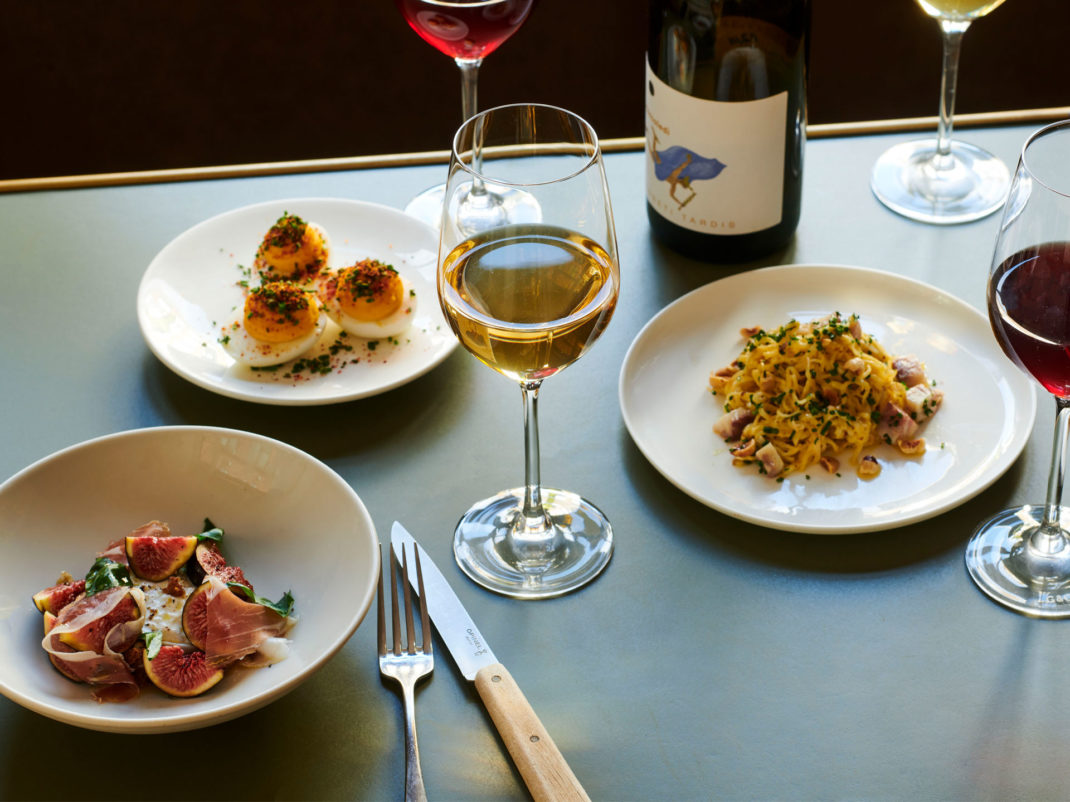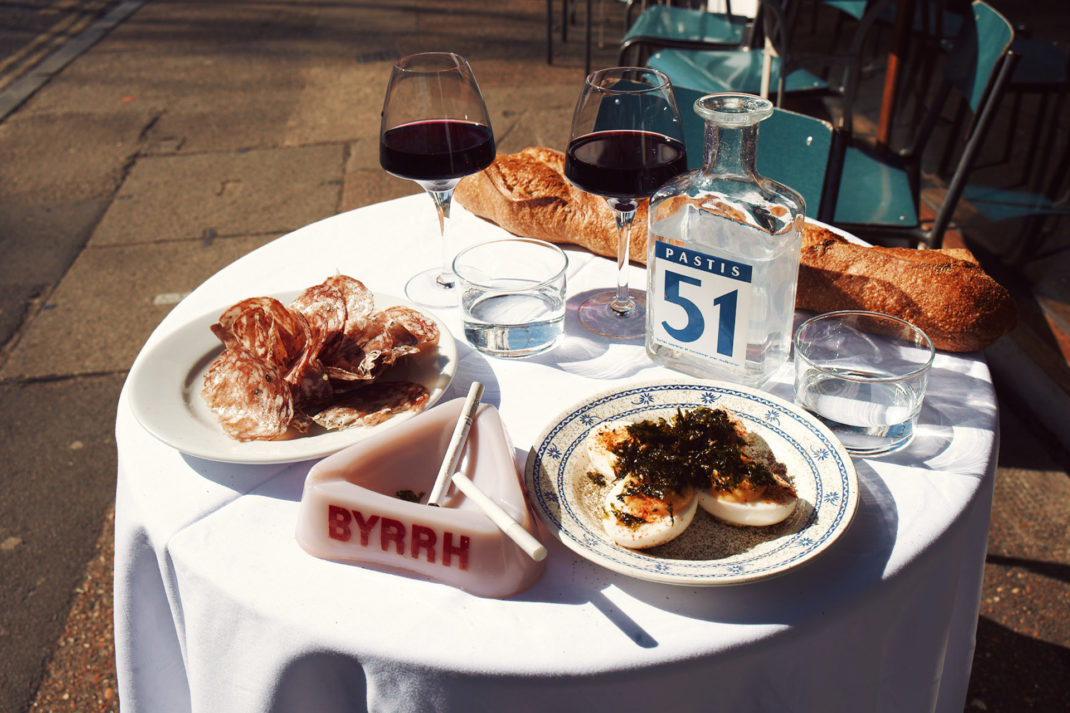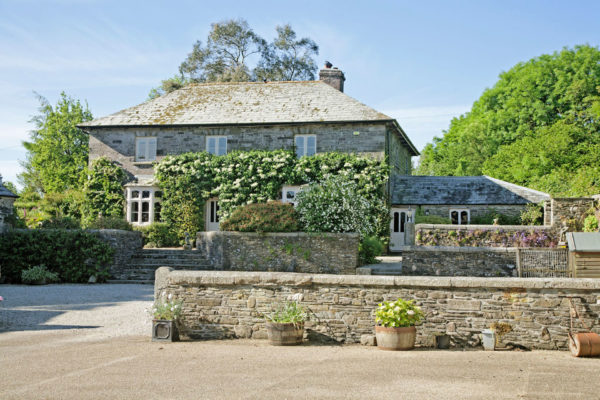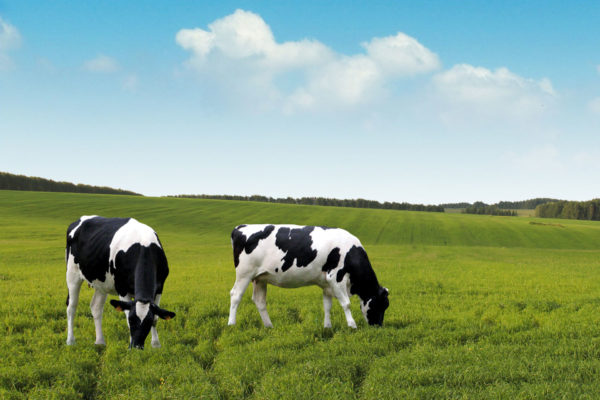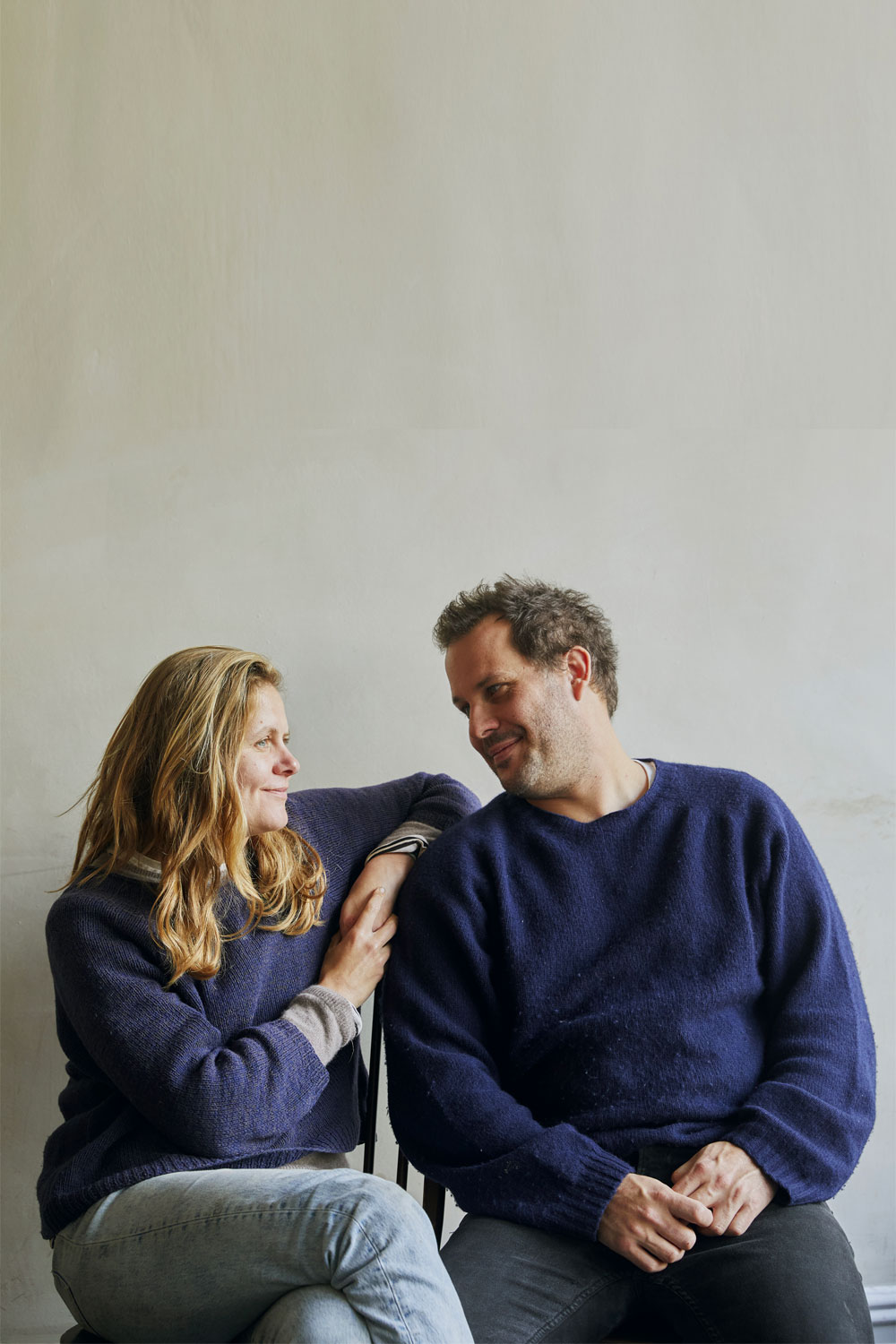
Meet The Power Couple Behind Bristol’s Green Michelin Star Restaurant, Wilson’s
By
3 months ago
And why they're wary of the S word (sustainability)
Jan Ostle and Mary Wilson are the husband-and-wife duo behind Bristol’s Green Michelin starred Wilson’s. The restaurant, located on Chandros Road, is the second in the city with this accolade, and presents a superlative hyper-seasonal menu. We talk to them about their foodie ethos ahead of their one night only dinner at Carousel, London, which raises money for humanitarian aid in Gaza.
Interview: Jan Ostle and Mary Wilson, The Power Couple Behind Wilson’s, Bristol
What’s your food philosophy?
Jan: My philosophy with food is that something delicious shouldn’t come at the expense of something else. For me, it’s about creating dishes that respect the ingredients, the environment, and everyone involved in the process.
Mary: Just as wine is often recognised for being influenced by its terroir, we feel the same way about food. We source our vegetables, foraged foods, and meat from within a short distance of the restaurant, with most of our vegetables and herbs coming from our own farm. I believe this approach allows us to offer a unique product, while also fostering important relationships with the people who hunt, rear, farm, and forage in our area.
You first received a Michelin Green Star in 2022… What does a Green Star mean to you – and do these awards really matter?
Jan: For me, the Green Star is an important recognition, not only for the kitchen but for our entire team’s commitment to sustainability. It’s a reminder that dining well can also mean doing good.
Mary: Accolades like this are important to us because they provide recognition that our customers can relate to, especially for those who might not hear about us through word of mouth. Of course, we were honoured to receive a Green Star, but for me, it felt particularly special because it acknowledged everything the entire Wilson’s team had accomplished – both in the restaurant and on the farm.
What makes food ‘sustainable’ in your eyes?
Jan: The menu at Wilson’s reflects what’s happening around us, from the rhythms of the seasons to what’s growing on the farm. Our dishes are both approachable and ambitious; we aim to make sustainability accessible while pushing ourselves creatively.
Mary: I tend to shy away from using the word ‘sustainable’ because it’s such a broad term that gets used quite often – and maybe it’s lost some meaning for me. In both food and business, we aim to take a more holistic approach, focusing on the ripple effects rather than just trying to be ‘sustainable’. We practise regenerative farming on our market garden to improve soil fertility and enhance biodiversity in the fields, and I believe these same principles can be applied to our restaurant and business. How we pay our staff, how much time off people get, valuing experience and knowledge, and helping to build on that – ultimately, it’s about creating something that will stand the test of time, with all the elements that contribute to that, across our entire business.
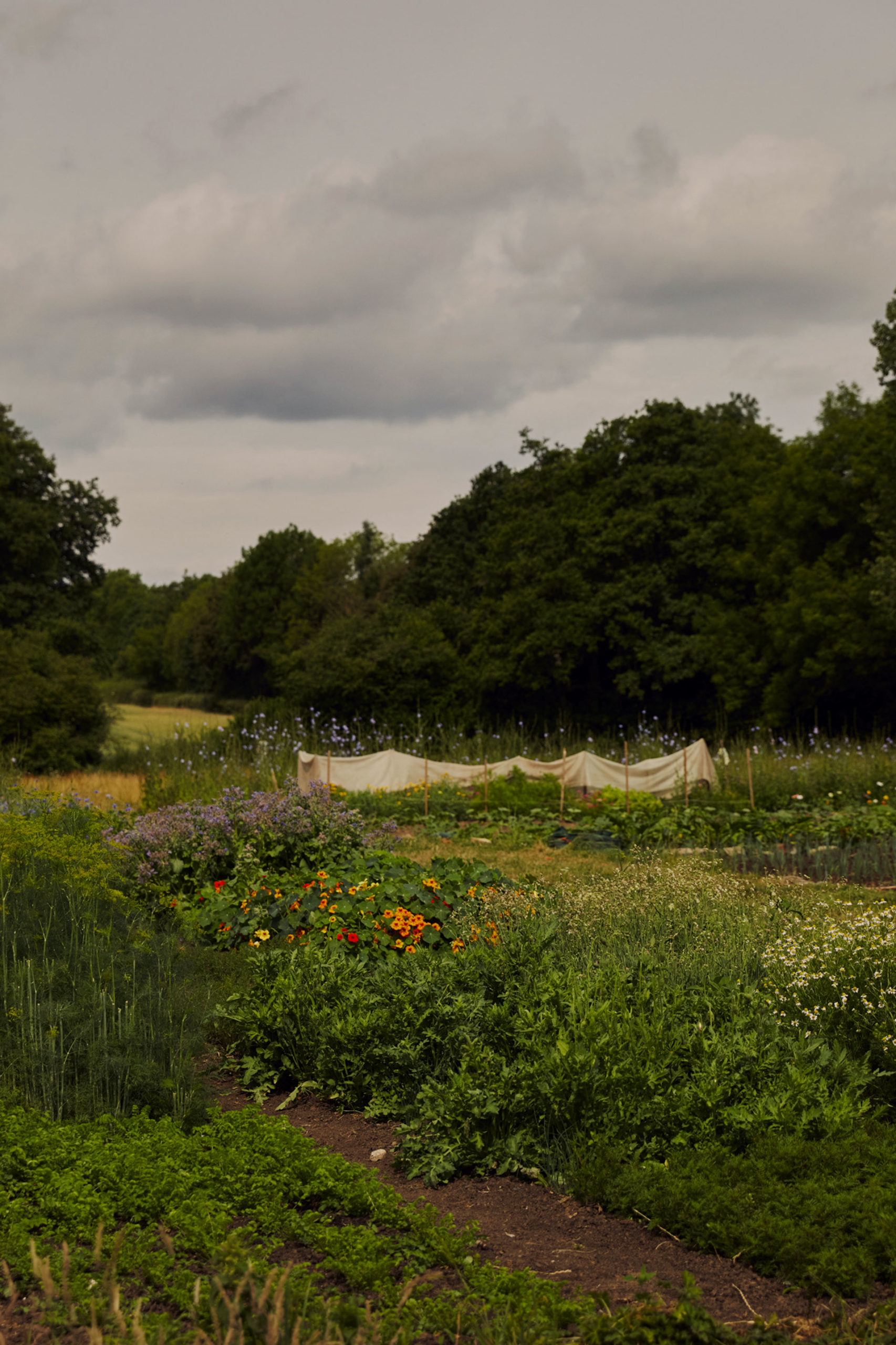
You operate a kitchen-garden; why is that, why is that important to you?
Jan: To me, a kitchen-garden is the pinnacle of sustainable cooking. It grounds us in a commitment to using only what we can grow or source locally, which keeps us incredibly conscious of seasonality, adapting our menu to what’s thriving on the farm at any given moment.
Mary: I studied biodynamic agriculture and had been working on farms before we moved to Bristol, though I had always worked in restaurants prior to that. We started the market garden as a way for Jan and me to work together and both do what we love. There are huge benefits to the way we’ve chosen to do things – it allows us to keep the restaurant deeply connected to the land and the seasons. We use the freshest, best-tasting vegetables in the restaurant, and the kitchen team is constantly challenged to stay creative and dynamic with the menu. The market garden drives the menu because that’s where everything in the restaurant begins.
Farmers had a hard year in 2024. What was your experience?
Jan: This has been our toughest year yet in the kitchen-garden. We’ve faced significant challenges, losing countless crops to unpredictable weather and putting in far more hours just to manage what we can salvage. It’s affected our workflow in the kitchen, too, requiring us to adapt constantly to what’s available or unexpectedly in short supply. But in some ways, these difficulties have taught us how to become even more adaptable; we’ve learned to make the most of every ingredient, and have become even more creative and flexible with our menus.
Mary: Yes, it’s been really challenging. The winters are incredibly wet and warm, and the summers are wet and cool. Spring causes the most problems, as it takes a long time for the soil to warm up and dry out, which pushes the growing season later. Then, summer and autumn come to a sudden end when the field gets wet again. We’re doing our best to navigate the changing weather. We’re fortunate that the restaurant supports the farm, as it wouldn’t be viable to produce vegetables on the scale we do otherwise. However, this isn’t the case for most farmers in the UK, and I think it’s really important to be aware of the changing climate and its impact on food production in Britain. The harder it becomes to grow here, the more it will drive up food prices for everyone.
And how do we fix this? Is it citizen action or policy?
Jan: I believe a key part of the solution lies in government support and incentives for growers. If we’re truly committed to building a green economy, then we need to back those who are already putting sustainable practices into action.
Mary: Ultimately, the responsibility lies with policymakers. There is very little financial support for small-scale UK farmers, and this lack of support will make it increasingly unviable. British-grown food will become too expensive to produce and, consequently, too expensive to buy. It’s also important to recognise that climate change is having a huge impact on both food and fuel prices, and policy must address this. There’s no way around it.
Are there things you believe individuals might be able to do to support and promote better, fairer food systems?
Jan: There are definitely actions each of us can take to promote a better food system, and some of them are surprisingly simple. For starters, buying local whenever possible makes a big impact. Beyond that, it’s about expanding access to locally-sourced food to our communities, making it accessible for all. It’s about making sure that sustainable food isn’t a privilege, but something that everyone can enjoy and benefit from.
Mary: In an ideal world, we’d all be buying food from local producers and makers who use regenerative practices, but of course, that’s not realistic or affordable for many people. If you can do that, I truly believe it’s the right choice – but I’m not comfortable telling people it’s the only way. We work in an industry where we see firsthand how much the cost of living crisis affects what customers can afford. What I would say is that people should demand more from policymakers for our food and farming systems – everyone deserves better.
You opt to include (responsibly sourced) meat and fish on your menu – how does this sit within your sustainable food vision?
Jan: I believe that meat that is wild or reared on an incredibly small scale can be entirely sustainable; it plays a role within a biodynamic ecosystem. What’s not sustainable is consuming meat daily – so my advice is simply: don’t. By treating meat as a special ingredient rather than something that should be consumed daily, we can enjoy it in a way that supports a balanced, more respectful approach to food.
Mary: For me, it’s about sourcing food using the lowest impact methods possible, both in terms of the environment and biodiversity, while also supporting smaller businesses so they can continue doing what they do.
Quick fire
What was the first dish you learnt to cook?
Jan: The first ever thing I learned to cook was probably a cheese toastie. Professionally, though, I think the first thing I really made was mayonnaise (though it was probably completely by accident).
Mary: Mashed potatoes.
What’s your favourite in-season ingredient, and why?
Mary: Chicory and radicchio – I love having crunchy, bitter, fresh leaves at this time of year, and the colours are beautiful.
What’s your lazy go-to throw-it-together dinner?
Jan: We roast a chicken almost every week and then use it for a variety of meals throughout the week. My favourite has to be Mary’s chicken noodle soup – it’s comforting and always hits the spot.
Mary: Noodle soup with chicken bone broth, leeks, some greens, soy sauce, and Kashmiri chilli sauce made by Jenan Land.
Which restaurant do you think everyone should try in their lifetimes?
Jan: Apart from Wilson’s, I’d definitely say St. JOHN. It’s a classic for a reason.
Mary: St. JOHN Smithfield.
What cookbook do you refer to the most?
Jan: The cookbook I refer to most is Honey from a Weed by Patience Gray. I get lost in it every time – it’s like reading One Hundred Years of Solitude, full of rich stories and timeless wisdom.
Mary: My current favourite is the Towpath cookbook. The photos are lovely and it’s just such a great read.
What do you particularly love growing?
Jan: I find celeriac particularly rewarding to grow.
Mary: I love growing onions and leeks from seed. I start them in large, deep vegetable crates and plant them out once they reach pencil thickness. I find the process from seed to harvest incredibly satisfying.
What’s your comfort snack?
Jan: My go-to comfort snack is a burger from Owee Burger on Picton Street. There’s nothing better after a long, tough day in the kitchen.
Mary: Very dark chocolate with sourdough, or porridge with brown sugar and cinnamon.
What’s a cool way to use up leftovers (that you’d recommend to our readers?)
Jan: We’re currently working on a recipe to turn sweet caramelised vegetable peelings into something special. Basically, save your vegetable peelings for about a week, then cover with water and simmer for a couple of hours. After that, reduce the mixture down to a dark syrup, which you can use in desserts. It’s a great way to reduce waste while adding a unique, rich flavour to your sweet dishes.
Mary: I love adding leftovers to cheese toasties, or in soups and stews with loads of fresh herbs.
Jan and Mary will be hosting a #CookForPalestine supper club in London on Sunday 26th January, where you can try Wilson’s food. Jan and Mary will be collaborating with Jenan Ashi to present a Palestinian menu at Carousel, with proceeds going to aid Gazans. £70, sevenrooms.com.
All photos by Emli Bendixon.

